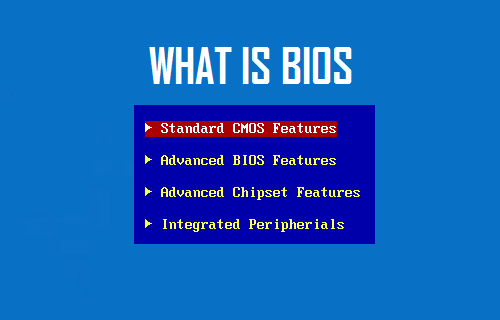What is BIOS in Computers?
In general, BIOS (Basic Input-Output System) can be defined as a firmware designed to instruct the computer to perform a series of start-up checks, before loading the operating system. The BIOS CHIP gets activated as soon as you switch ON the computer and instructs the computer to run startup checks to confirm the integrity of all hardware components and attached devices. Once the startup tests are successfully completed, BIOS loads the required or relevant portios of the operating system into the computer’s RAM (Random Access Memory). All details of the computer’s Hardware compenents are stored and managed by BIOS, which frees up the operating system from the task of understanding hardware and connected devices. When you install a new device or device details change, only the BIOS program needs to be updated, no need for the software to change or adapt to revised devices.
BIOS Start Up Process
As mentioned above, the boot up or start up process on a computer is initiated and managed by BIOS and it comprises of the following steps.
Brief History of BIOS
The term BIOS was first introduced by Gary Kildall in 1975, to describe the machine-specific part of CP/M (Control Program/Monitor) operating system. However, Gary Kildall’s CP/M operating system could not make into IBM’s first personal computer which was released to the public in 1981 (August 12, 1981). BIOS was part of IBM’s first personal computer (IBM 5150) which was based on Intel’s 8088 (4.77 MHz) Processor and used MS-DOS (Microsoft’s Disk Operating System) as its operating system.
BIOS is Getting Replaced By UEFI
Originally, BIOS was stored in a ROM chip on the PC motherboard which required the chip to be removed in order to update the firmware. Later on modern computer systems started using flash memory to store BIOS, which made it easy to push updates and fix bugs in the firware, without removing the BIOS chip from motherboard. However, this made BIOS vulnerable to rootkit attacks by viruses. Hence, BIOS in newer computers is being replaced by UEFI (Unified Extensible Firmware Interface) which has Secure Boot. Secure Boot restricts the type of applications that can be used to boot up the computer, which makes it more secure, compared to BIOS.
How to Update BIOS in Windows 10 How to Enter BIOS or UEFI Settings in Windows 10
